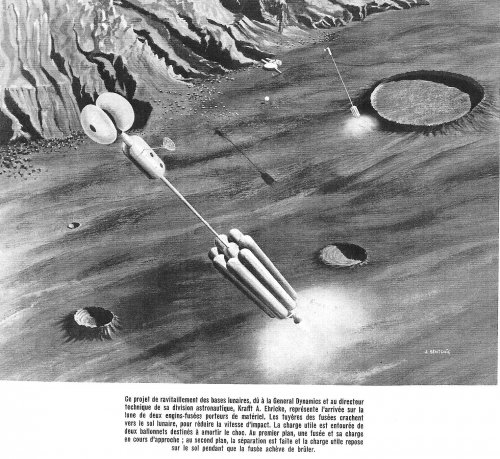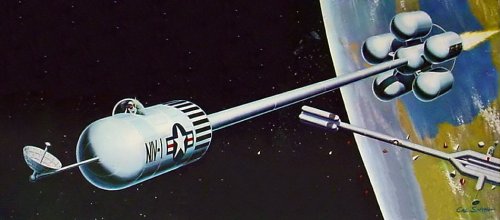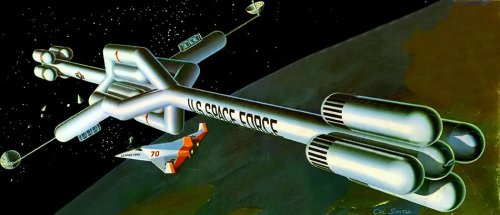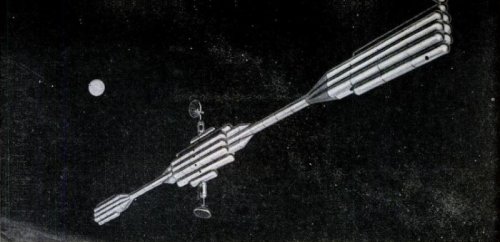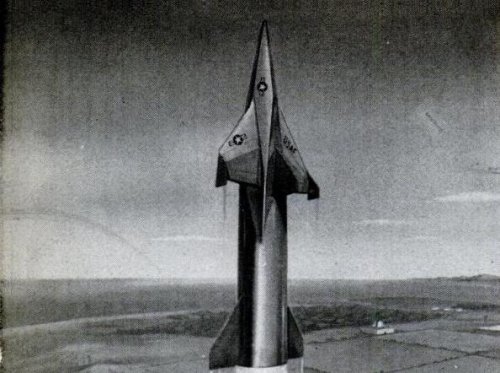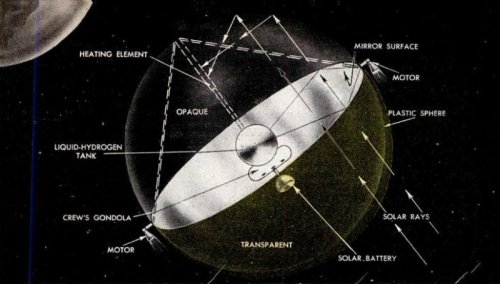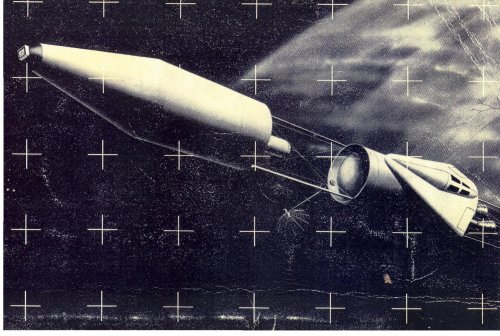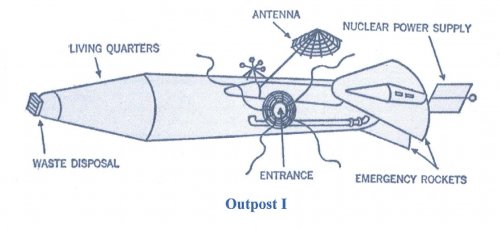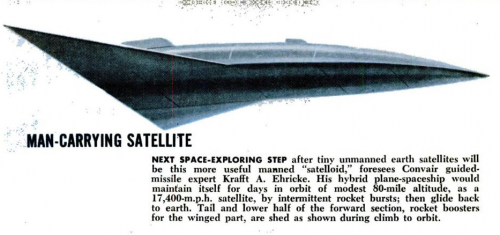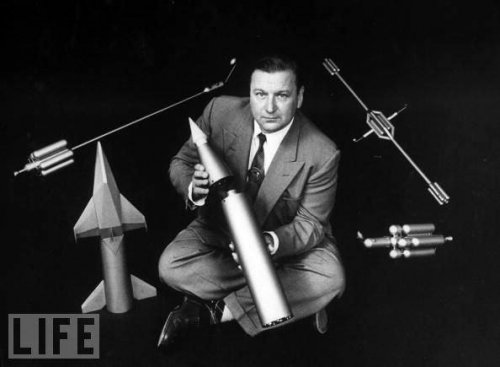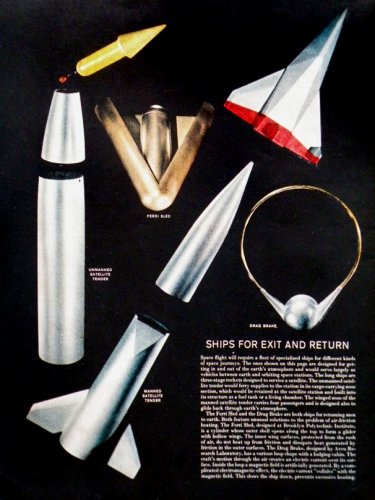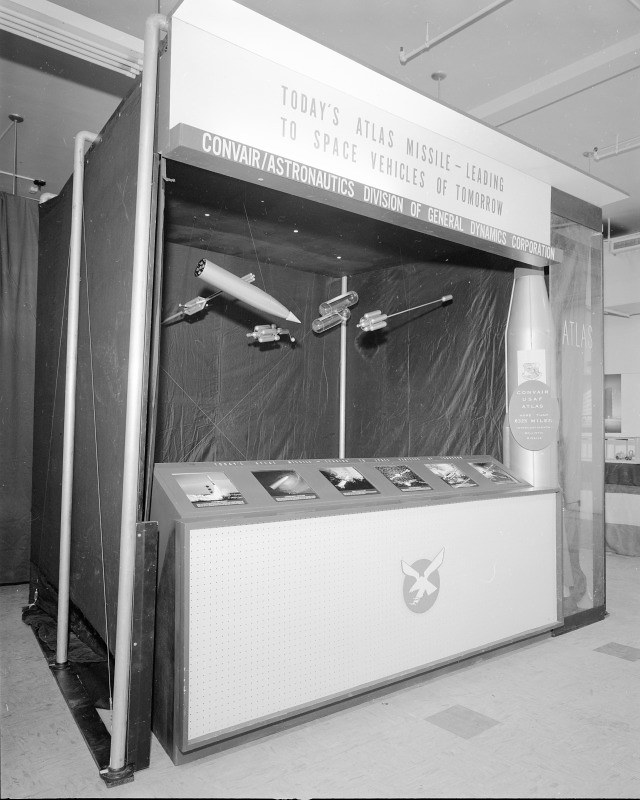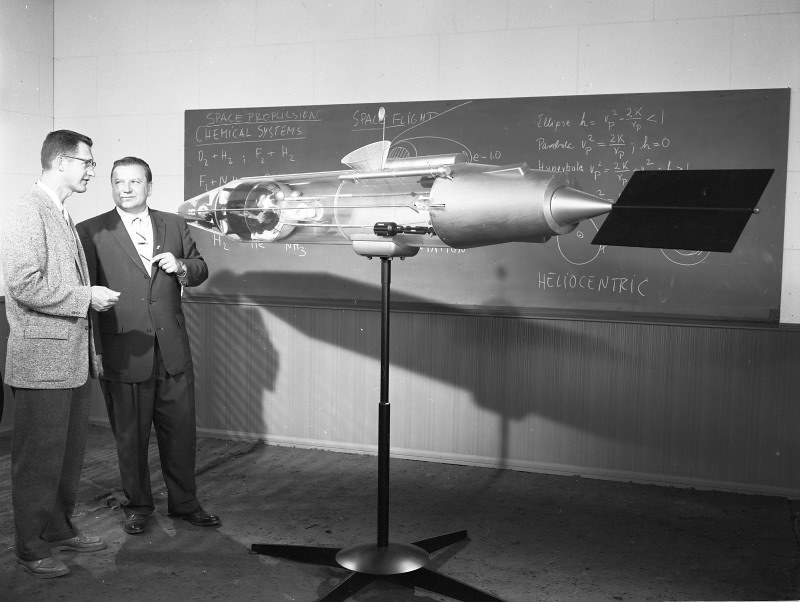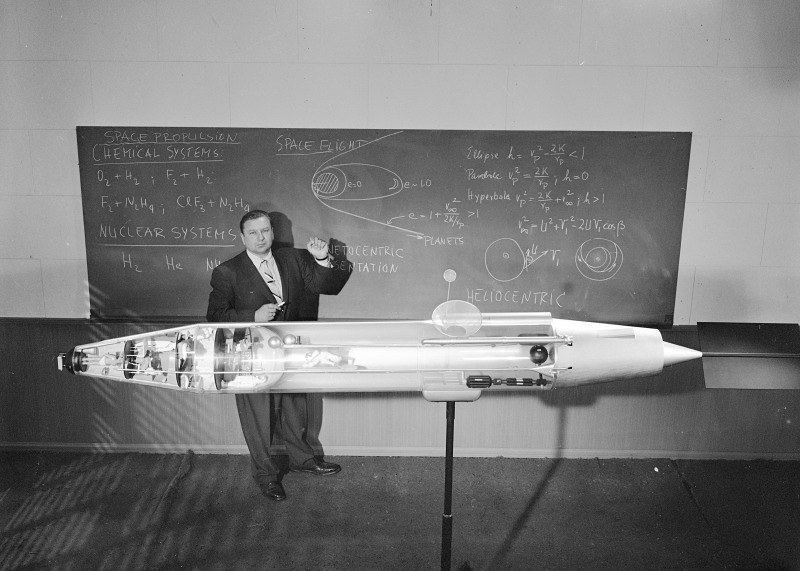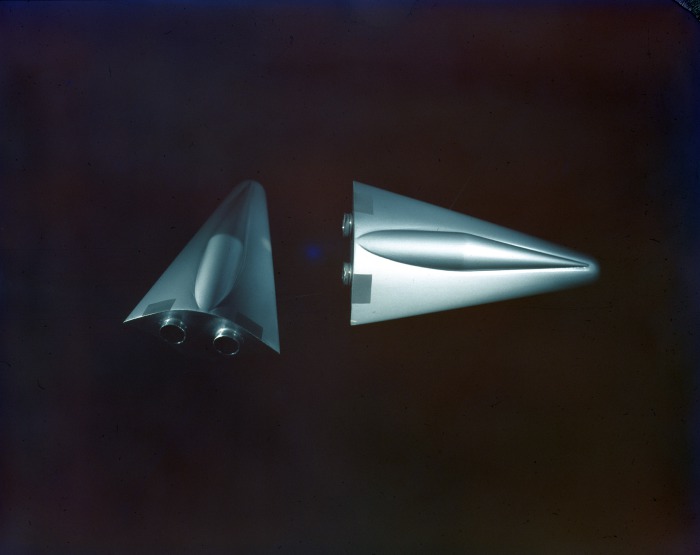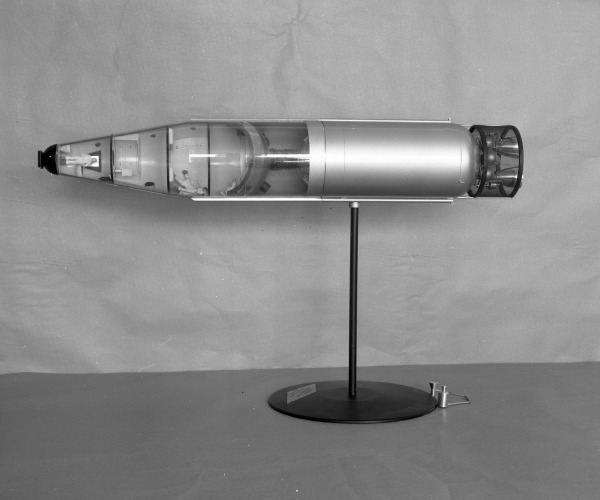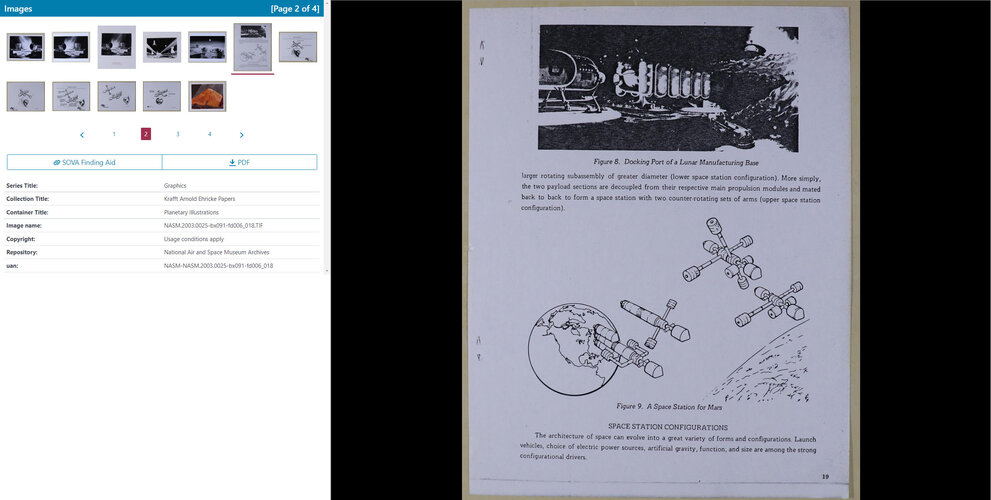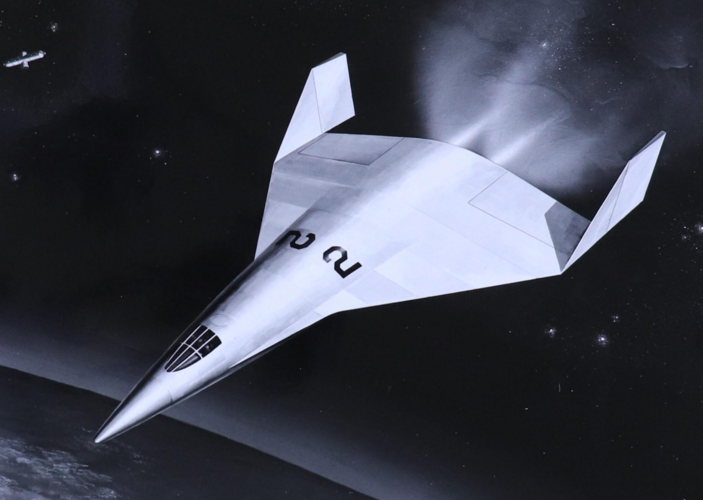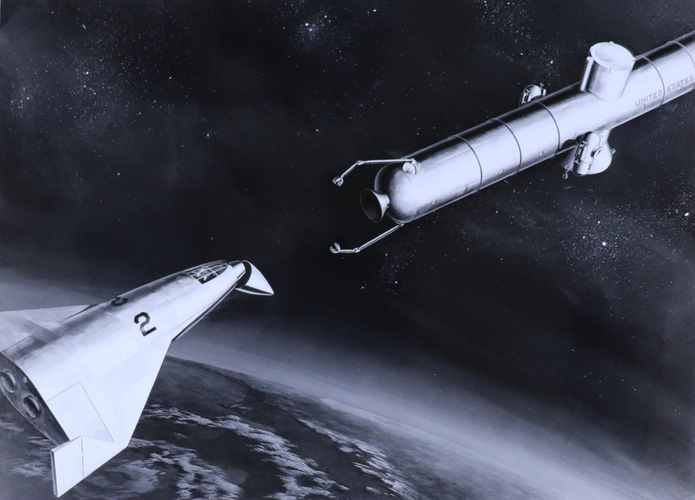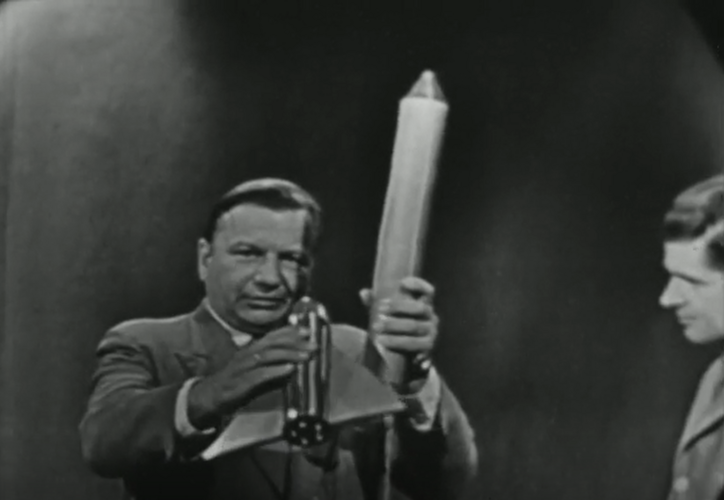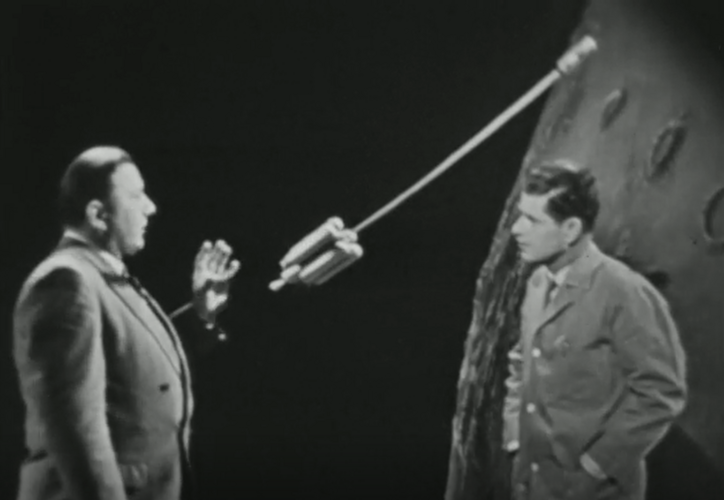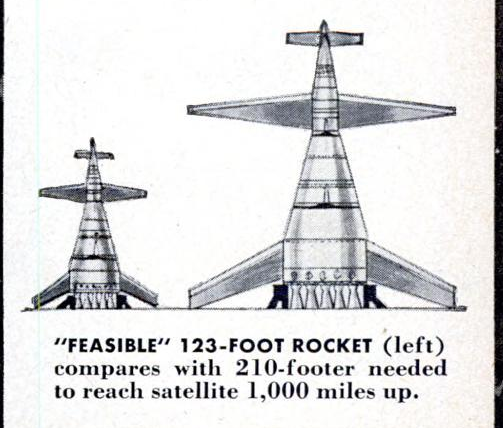There littel info about
"Convair astronautics Manned observational Satellite Vehicle " short MOS from 1958
MOS is build out empty oper stage from cargo and Manned Rockets parts (one pilot 4 passengers).
Cargo rocket brings 11000 pound (4.989kg) Payload in height of 600 miles (965 km) orbit.
three stage manned Shuttle for MOS
it would take 10 years to build the station,
in middle is a Nuclear Reactor for power supply
the 400 foot (121,92 meter) long assembly rotate for artical gravity.
the Manned Observational Satellite Vehicle build 5 year later after MOS
use chemical Rocket engine with littel Oxidizer tanks and big fuel tanks
Source:
The Dream Machines by ron Miller
Page 404 to 406
(you don´t have this book ? Shame on you !)
Another Idea of Krafft Ehricke
HELIOS (Hetero-Powered Eart-Launched Inter Orbital Spacecraft)
fasten your seatbelds !
Its a two Stage Rocket to Moon 800000 kg (1.763.698 pound) Liftoff mass.
6 meter (19,6 foot) ø, 60 meter (196 foot) long, fist stage wingspan is 27 meter (88,58 foot) wide
first stage chemical engine manned Delta wing push the Crew and second stage in 45-50 km high (50 miles)
(it weight fully loaded 700000 kg empty 32000 kg 2 engine in total 1.2 million kilopound trust.)
separates and fly back to launch place
the crewcompartment separate form second stage on roll on 300 meter (1000 foot) long cable down
the Second stage ignites its NUCLEAR engine and pulls the crewcompartment toward the Moon

(total assembly weight 100000 kg)
the Reactor has power of 2600 Megawatt 100000 kilopound Trust, Acceleration of 1 G (9,81 meter/sec)
After a complex roll manover, the rocket land on the moon crewcompartment fist
the second stage 300 meter away from it...
Krafft Ehricke do not explane (in text) how they return!
who far hast to be a Astronaut to be save of a Open Nuclear Reactor ? (like running NERVA engine)
14000 Meter or 45.931 foot !!! remember cable is only 300 meter (1000 foot) long :

the Second version of HELIOS in 1960 look like a Atlas rocket only bigger
Booster stage with Lox tanks and 4 engine only to take nuclear second stage to stratosphere.
Nuclear sustainer takes payload to orbit or escape trajectory.
Payload or Crew Save on top of the Rocket.
Source:
HELIOS (old Killer version)
Raumwaffen Econ verlag 1959 page 163-164 (german)
Space Weapons, A handbook of Military Astronautics. 1959 frederic A. Praeger Inc, publisher
HELIOS (1960 Version)
http://www.astronautix.com/lvs/heliosa.htm





